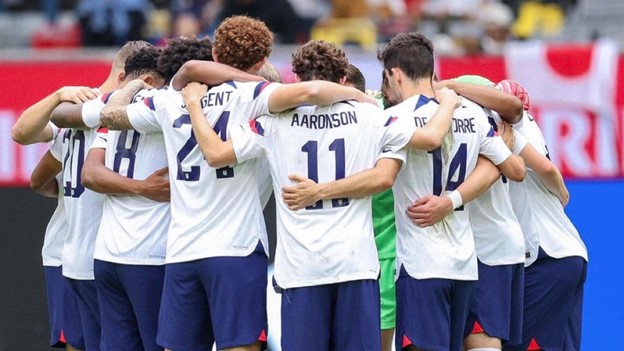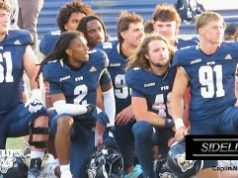The United States Men’s National Team closed its final camp in Murcia, Spain on Sept. 27 ahead of the 2022 FIFA World Cup, and there is real concern following the matches against Japan and Saudi Arabia. The Americans had awful showings against the two Asian nations. After having failed to score a goal in the two games, coach Gregg Berhalter has a lot of questions to answer when we see the team again in November.
This camp was the first time the team gathered together since June and the squad underwent major changes in between. Nine of the 26 players called into camp transferred clubs during this past summer transfer window, some in hopes of looking for regular minutes ahead of the tournament and others just taking a step forward in their careers.
While the jury is still out on most of those moves, winger Brenden Aaronson and midfielder Tyler Adams shook up English Premier League (EPL) coverage in the United States after they both moved to Leeds United this summer.
Aaronson described his emergence at Leeds as a “whirlwind,” but remains appreciative of the support from the club’s fans and fans in the United States. Multiple “Big 6” clubs in the EPL have had their games removed from a TV broadcast in the U.S. to accommodate Leeds games.
“It’s been fun, also having Tyler [Adams] there,” Aaronson said in a post-training press conference. “Getting used to the area and being able to get food together. It’s definitely nice.”
But he’s cut off by goalkeeper Matt Turner, who is another recent transfer after his move to Arsenal in the EPL.
“Must be nice,” Turner said. “I’m changing diapers and he’s out golfing and getting food with Tyler.”
As Aaronson, Turner, Adams and the rest of the team catch up after a summer apart, the coaching staff get to work after Yunus Musah, Cameron Carter-Vickers and Chris Richards were withdrawn from camp after suffering injuries, the three were later replaced by Johnny Cardoso, Erik Palmer-Brown and Mark McKenzie.
Following the roster adjustments, the team turned its focus towards their first opponent of the camp: the Japan Men’s National Team.
Japan, currently ranked 24th in FIFA’s world rankings, is also in the midst of preparations for the World Cup in November after being grouped with Germany, Spain and Costa Rica. Team USA coach Gregg Berhalter knew the opportunity his team had, but his decisions suggest the team may be further behind in the preparation process than many hoped.
In a press conference ahead of the match against Japan, Berhalter emphasized his use of this camp to evaluate player selections in different positions.
The USMNT has played four games since qualifiying in March and the coach is using these two games to make evaluations.
Strikers Josh Sargent and Ricardo Pepi are two of those being closely evaluated since the ‘number 9’ position is a big question mark for the team. Berhalter noted that these two players were getting a second shot after not being called up for a long time and picking up form with their clubs, but didn’t write off camp omissions like Union Berlin’s Jordan Pefok or FC Cincinnati’s Brandon Vazquez, saying they could still be useful in the system.
The Pefok omission was surprising considering that Sargent and Pepi were called in due to club form. The striker currently has three goals and assists apiece for a Berlin side that sits atop the Bundesliga in Germany.
The USMNT had to answer the surprising snub.
“We’re trying to put together the best possible team that can perform at our best levels at the world cup,” Berhalter said. “And for that, we pick players that fit the way we want to play and our team culture.”
That beloved system that Berhalter lives and dies with, a system that prevents him from calling up players on better form, walked his team right into a 2-0 loss against Japan during the first of two games this camp.
The possession-based system that he likes to play, which involves playing the ball out of the back, was found out quickly by the Japanese players. The “Samurai Blue” suffocated the USMNT when they saw center-backs Walker Zimmerman and Aaron Long struggle to play the ball forward against their high press. Their inability to connect with the midfield saw the Americans lose possession a record 54 times in the first half and one of those giveaways led to a goal by Japanese midfielder Daichi Kamada.
The second half was more of the same. Japan did not let off the gas and the U.S. had no answer for it. More sloppiness and lack of discipline on the ball saw the Asian nation seal the game with a goal from winger Kaoru Mitoma in the 88th minute.
The first of the last two games before the World Cup ended in the United States getting outshot 16 to 4 and failing to register a shot on target.
Attention then shifted to Tuesday’s opponent, Saudi Arabia. Berhalter’s words before the game indicated that the team had moved on from the Japan result and was ready to put their best effort forward in their following match.
“We could’ve played much better and we didn’t. We wanna play better this game,” Berhalter said in a pre-match press conference. “It starts with the collective. Us playing together. More cohesive. If we do that, we’ll be fine”
The second match was better, but not good.
While the ball was flowing better and the U.S. players looked more aggressive to start the game, it turned into more of the same from the Japan game as time went on and they went longer without a goal. The Americans still failed to really threaten the Saudi’s goal as they only got two shots on target, and the pace of the game was still slow as it ended in a 0-0 draw.
It was not the response Berhalter needed from his team.
Two goal-less games and zero wins is what we got from the USMNT in its final showings before appearing on the biggest stage the sport has to offer.
































